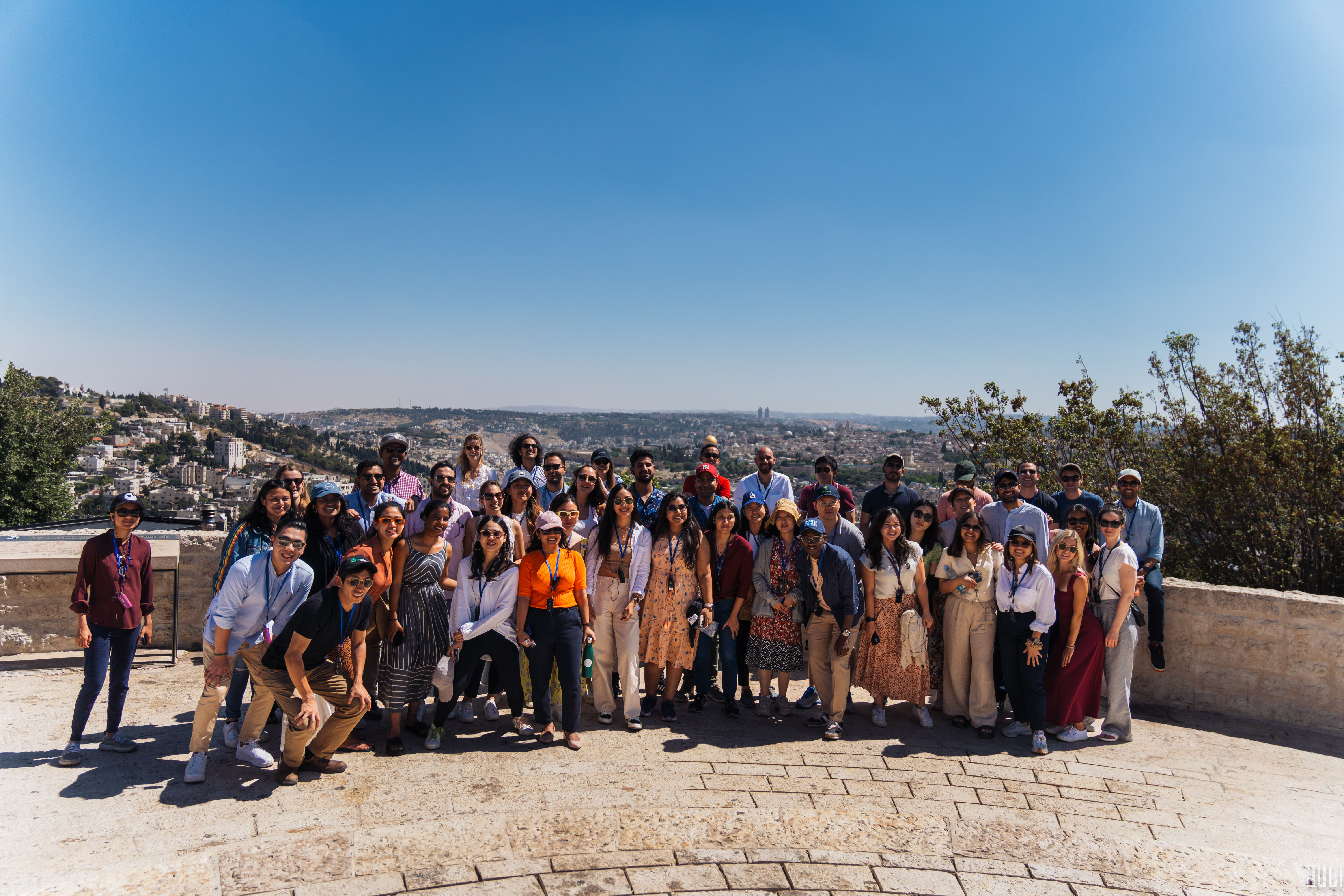One of the most fascinating and unique aspects of Israel is how it simultaneously pulls you into both the future and the past. All the word-class entrepreneurs and VCs give us a peek into the future, while studying its complicated history offers us a chance to better grasp the modern geopolitical landscape. It was a grounding experience to turn our attention from disruptive innovations to the story of one of the holiest places in the world. We realized our professor didn’t intend for a visit to the Old City of Jerusalem to be a leisurely break from the back-to-back talks. We had a fantastic guide who gave us a rich overview of the three Abrahamic religions and explained in impressive detail why the Old City is an important place for each of them.
The view of the Judean desert and places of worship during our drive up were a change of scenery from slides illustrating cutting-edge technology and private market data. This gave us a chance to reorient, while our guide recounted tales from thousands of years ago with impressive clarity. As we got closer, he pointed out and explained the significance of Temple Mount and Mount of Olives. We then briefly stopped at an outlook that offers a view of several key sites, including the Dome of the Rock and the Church of the Holy Sepulchre.
As we entered, we learned that in ancient days everyone in Jerusalem used to live in what is now called the “Old City”; the rest of the city is at most 150 years old. Of course, we learnt basic facts such as its division into four quarters: The Jewish Quarter, The Armenian Quarter, The Christian Quarter, and The Muslim Quarter. But walking through it gave us an opportunity to understand its current, lived experience. People still reside there today; the families and high school students going about their routine seemed accustomed to the groups of tourists studying their hometown. Layers of history are literally present in the Roman Square, depicting the rise and fall of different empires in the region over time. From here you can also see a mosque, church and synagogue all in close proximity to each other. Although we were only able to spend fifteen minutes at this spot close to the end of the visit, it exemplifies how a tour of the Old City can be a sweeping account of major parts of human history.
It’s difficult to recount the entire three hours in a short post. But needless to say, a trip to Israel isn’t complete without a trip to the Old City.
